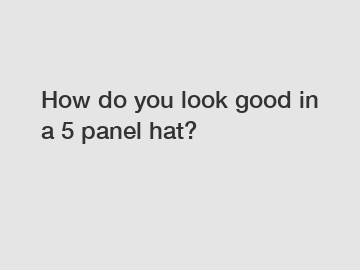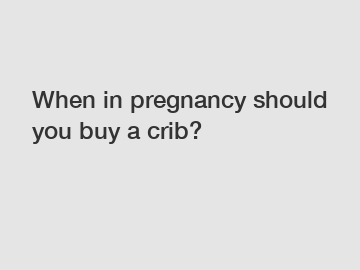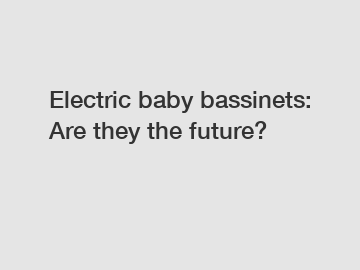Clothing and Textiles Regulations in the United States
Clothing and Textiles Regulations in the United States
Clothing and textile products imported, manufactured, and sold in the United States are subject to various labeling, flammability, substance, testing, and certification requirements. This guide explains what US brands should know about such requirements for clothing, curtains, pillows, rugs, and other textile products.
Jiamei Labels Product Page
FREE CONSULTATION CALL (US, EU & UK)
- Request a free 30-minute call with Ivan Malloci to learn how we can help you with:
- Find product requirements
- Certification and labeling
- Lab testing
REQUEST A CALL
Textile, Wool and Fur Acts and RulesThe Textile, Wool and Fur Acts and Rules sets labeling requirements for textile, wool, and fur products such as clothing, cushions, and rugs.
Covered products
Here are some examples of covered products:
- Apparel
- Curtains and casements
- Rugs, carpets, and mats
- Yarns and fabrics
- Cushions
Exempted products
The Textile, Wool, and Fur Acts and Rules exempt several products, such as:
- Fur products obtained via hunted animals
- Secondhand household textile items
- Artists' canvases
- Tapestry cloth
- Shoelaces
- Belts
Required information
Textile and apparel products to be sold in the United States must be labeled with the following information:
- Fiber content
- Importer or manufacturer identity or Registered Identification Number (RN)
- Country of Origin
Fiber Composition
The label of a textile product must indicate the product's fiber composition. For example, if the textile fiber product is made entirely out of cotton, then the label should read: '100% cotton'.
However, products with different sections that comprise at least two kinds of fibers should have a label that reads, for instance: 'Body: 100% silk Sleeves: 90% cotton, 10% nylon'.
Here we list some common textile fibers:
- Silk
- Wool
- Cotton
- Nylon
- Polyester
Placement
In general, the label must be conspicuous and accessible on the inside or outside the product. The label must also be securely attached to the product.
Label Placement Examples
a. For garments, the label could be attached near the inside center of the neck.
b. For skirts, the label could be placed inside of the waistband.
c. For pillowcases, the label could be attached on the inside close to the open end.
Care Labeling of Textile Wearing Apparel & Certain Piece Goods16 CFR Part 423 contains care labeling requirements. It mandates importers and manufacturers of textile wearing apparel, as well as certain piece goods, to include regular care instructions.
Covered products
16 CFR Part 423 covers textile wearing apparel, which is defined as textile clothing used to cover body parts, such as hosiery.
It also covers certain piece goods, defined as bolts or rolls of textile products meant for making home-sewn textile clothing.
Exempted products
Part 423 exempts head- and hand-protection products, such as footwear, gloves, and headwear.
Labeling requirements
Importers and manufacturers must affix care labels to their clothing products, and use the terminology specified in Appendix A to Part 423, such as:
- 'Wash inside out'
- 'Do not iron'
- 'Do not bleach'
They may choose to use the symbol system specified in ASTM Standard D-96c on care instructions or care labels instead of the terms specified in Appendix A.
The regulation also permits the combination of symbols and terms, so long as both comply with 16 CFR Part 423.
Flammable Fabrics Act (FFA)The Flammable Fabrics Act (FFA) sets requirements concerning the flammability of clothing, fabrics, carpets, and other textile products.
16 CFR Part ' Standard for the Flammability of Clothing Textiles
16 CFR Part sets up flammability testing standards, methods, and performance requirements for textile clothing products. It requires that textiles that have high flammability should not be made into clothing.
Covered products
16 CFR Part applies to clothing and fabrics that are intended to be made into clothing.
Exempted products
Part does not apply to certain types of hats, gloves, footwear, and interlining fabrics.
It also exempts from testing the following materials:
a. Plain surface fabrics with a weight of at least 2.6 ounces per square yard
b. Fabric made of acrylic, modacrylic, nylon, olefin, polyester, and wool (or any combination of the mentioned fibers)
Requirements
16 CFR Part sets forth flammability classification and requirements:
a. Class 1 ' Normal flammability: Fabrics are classified as Class 1 if they exhibit 'normal flammability' after being tested according to the testing methods specified in section .6. Class 1 fabrics are deemed suitable for clothing.
b. Class 2 ' Intermediate flammability: Raised-fiber surface textiles are classified as Class 2 if they exhibit 'intermediate flammability' (i.e., a burn time of 4 to 7 seconds). In this case, they are still deemed to be suitable to be used as clothing. Note that Class 2 doesn't apply to plain surface textile fabric.
c. Class 3 ' Rapid and intense burning: Class 3 fabrics exhibit 'rapid and intense burning'. These fabrics are deemed dangerously flammable and should not be used for clothing.
16 CFR Part ' Standard for the Flammability of Vinyl Plastic Film
16 CFR Part sets flammability testing standards and procedures for clothing or textile products made of non-rigid, unsupported vinyl plastic film, such as raincoats.
Covered products
Part covers textile products that are made from vinyl plastic film. Examples of such products include:
- Raincoats
- Down jackets
- Socks
Requirements
This standard mandates fabrics made from vinyl plastic film to fulfill specific flammability requirements. For example, plain surface textile fabrics should burn in 3.5 seconds or more.
16 CFR Part and Part ' Standards for the Flammability of Children's Sleepwear
These are standards concerning the flammability of children's sleepwear of different sizes. Both standards set fabric testing methods and procedures using small open-flame ignition sources.
Covered products
Part applies to children's sleepwear in sizes 0-6X, whereas Part applies to children's sleepwear in sizes 7-14. This includes:
- Robes
- Nightgowns
- Pajamas
Exempted products
Both standard exempt diapers, underwear, and tight-fitting garments.
Requirements
These parts set up testing and labeling requirements for covered products. The following information should be displayed on children's sleepwear labels:
- Fabric production unit (FPU) identification number
- Garment production unit (GPU) identification number
- Care labels
16 CFR Part and Part ' Standards for the Surface Flammability of Carpets and Rugs
16 CFR Part and Part are flammability standards for carpets and rugs. They cover testing methods and procedures to determine the surface flammability of carpets and rugs using ignition sources, such as lighted matches.
Covered products
The requirements of Part apply to household carpet products with dimensions greater than 6 feet (1.83 meters) and a surface area greater than 24 square feet (2.23 square meters).
The requirements of Part apply to carpets and rugs with dimensions and surface areas smaller than those specified in Part .
Exempted products
Both standards exempt from testing one-of-a-kind small rugs and carpets, such as:
- Antique
- Oriental
- Hide
Requirements
Besides flammability testing, both 16 CFR Parts and require carpets or rugs that have gone through special fire retardant treatment to contain the letter 'T' on the label.
Part requires that carpets and rugs not meeting all the necessary flammability requirements must bear a permanent label with this statement in bold font:
'FLAMMABLE (FAILS U.S. DEPARTMENT OF COMMERCE STANDARD FF 2-70): SHOULD NOT BE USED NEAR SOURCES OF IGNITION'
General Certificate of Conformity (GCC)The General Certificate of Conformity (GCC) is a document that is self-issued by importers or manufacturers of non-children's products to demonstrate that the products:
a. Have been tested according to the applicable CPSC's safety standards or regulations; and
b. Comply with the technical and regulatory requirements.
A GCC should include information such as:
a. Product description (product name, model/batch number)
b. Standards that the products comply with (e.g., 16 CFR Part )
c. Contact information of the importer or domestic manufacturer
d. Production information (Place of origin, manufacturing date)
e. Information about the testing agency (where the product is tested)
A GCC is required for products that are covered by the Flammable Fabrics Act ' excluding children's sleepwear and other children's products, for which a CPC is required. However, these two documents are similar.
Guides for Select Leather and Imitation Leather ProductsThese guides specify the labeling requirements for products that are made of leather or imitation leather. They require that manufacturers, importers, or sellers of leather or imitation leather products must provide an authentic product description on the label, regarding the following aspects:
- Kind
- Grade
- Quality
- Quantity
- Material content
- Thickness
- Finish
- Serviceability
- Durability
- Price
- Origin
- Size
- Weight
- Ease of cleaning
- Construction
The Consumer Product Safety Improvement Act (CPSIA) regulates products intended to be used by children below 12 years old, including clothing and textile products.
Covered products
Here are some examples of apparel or textile products that are covered by CPSIA:
- Children's sleepwear
- Carriers
- Sleepers
- Bouncer seats
Safety Standards
Here we list several standards that are relevant to children's clothing and textile products:
a. 16 CFR Part ' Safety Standard for Bedside Sleepers
b. 16 CFR Part ' Safety Standard For Sling Carriers
d. 16 CFR Part ' Safety Standard For Soft Infant And Toddler Carriers
d. 16 CFR Part -Safety Standard for Infant Bouncer Seats
Requirements
To comply with the CPSIA requirements, importers or manufacturers of children's clothing prepare the following:
a. Tracking Label containing manufacturer's name, location, date of production, and other information.
b. Children's Product Certificate.
If you are looking for more details, kindly visit functions and requirements of clothing labels factory.
Additional reading:Key Questions to Ask When Ordering Shoe Manufacturers For Small Businesses
5 Tips on How to Choose a Private Label Shoe Manufacturer
Custom Women Dresses vs. Off-The-Rack: Which is Better?
10 Questions You Should Know About Maxi Dresses
Top 5 Fluffy Carpets: Styles, Care Tips & Allergy Solutions
Stylish Custom Women Tops for Every Occasion
How to Choose Stylish Women Tops?
c. Registration card (only necessary for durable infant products).
d. Valid test reports issued by CPSC-recognized lab, demonstrating that the products comply with applicable safety standards.
Additional requirements might apply, according to the product. For example, warning labels are required for some products.
Substantial Product Hazard List (16 CFR Part ) ' Drawstrings in Children's Upper OuterwearThe CPSC determined that certain consumer products have characteristics whose existence presents a substantial product hazard to the users. It specifies these products and sets out rules and standards for them under 16 CFR Part ' Substantial Product Hazard List.
The CPSC has listed children's upper outerwear with hood and neck drawstrings in sizes 2T to 12 in Part ' Substantial Product Hazard List because such products present a strangulation hazard to the children.
Importers and manufacturers of such products should make sure that their products comply with the requirements of ASTM F-97 Drawstrings on Children's Upper Outerwear.
Country of Origin MarkingThe country of origin marking is mandatory for consumer products, and it should be permanently affixed on the product or packaging. The exact placement depends on the product, but it is common to see the country of origin printed on a sewn label inside garments.
Further, the country of origin label should not be covered by any other label to ensure that it is visible at the time of purchase.
Examples
- Made in Mexico
- Made in Vietnam
- Made in China
- Made in USA
- Made in Italy
The FHSA regulates household products that contain potentially dangerous substances such as corrosive, reactive, and toxic substances. The FHSA requires labeling to alert consumers about the potential hazards and what they need to do to protect themselves from those hazards.
The FHSA also covers flammable chemicals and fire retardants that are commonly used in the textile industry. Formaldehyde, which is a chemical substance used to increase wrinkle and crease resistance in textiles, is an example of a substance restricted under the FHSA.
You can learn more about this topic in this document.
Toxic Substances Control Act (TSCA)The Toxic Substance Control Act regulates the manufacture, importation, usage, and disposal of certain substances and the products that contain those substances. Below we explain how the TSCA regulates PFAS and PBT, which are substances that may be found in textile products.
PFAS
40 CFR Part 705 sets reporting and recordkeeping requirements for PFAS and products containing PFAS.
Generally, manufacturers of PFAS and products containing the same (including textiles) must report to the EPA on the following:
- Company and plant site information
- Chemical-specific information
- Categories of use
- Manufactured amounts
- Byproduct reporting
- Environmental and health effects
- Worker exposure data
- Disposal data
Persons responsible for reporting the above information must also keep records of information submitted to the EPA. This rule applies to substances and products that were made available between January 1, , and November 13, .
PBT
PBT substances persist and bioaccumulate in the environment, and are toxic to human health. They are found in consumer products such as textiles.
According to the EPA, decaBDE is a PBT substance that is used as a flame retardant in textiles and upholstered products.
40 CFR Part 751 prohibits the manufacture, processing, and distribution of decaBDE and products containing the same, such as textiles. It also sets recordkeeping requirements.
Organic Textiles: National Organic ProgramThe USDA enforces national standards regarding organically produced agricultural items for sale in the US. Products that comply with the requirements may display the USDA organic seal and be labeled as 'organic'.
Although the scope of the National Organic Program (NOP) includes many other products, in this section we only focus on requirements regarding textiles.
Covered products
The NOP covers agricultural raw natural fibers, such as:
- Cotton
- Flax, and
- Wool
Documentation
The NOP sets certification and recordkeeping requirements.
Certification requirements
Persons who wish to receive organic certification should apply for certification from a certifying agent before exporting their organic agricultural products.
Maintaining organic certification requires paying the annual certification fees to, submitting documentary deviations from their organic system plan to, and permit on-site inspections by a USDA-accredited certifying agent.
You can find the full set of certification requirements in 7 CFR Part 205 Subpart E.
Recordkeeping requirements
According to 7 CFR Part 205.103, the NOP requires certified operations to keep records regarding the manufacture, harvesting, and handling, of agricultural products (e.g., textiles) that are, or that are meant to be, sold, labeled, and represented as organic.
USDA Organic Seal
Certified farms and companies show that their products, including textiles, are organic by using the USDA Organic Seal, which is an official and federally protected mark.
Products may bear the USDA Organic Seal if they:
a. Contains ingredients that are 100% certified organic; or
b. Contains at least 95% certified organic ingredients
However, products should not bear the USDA Organic Seal if they:
a. Contain at least 70% of certified organic ingredients that are organically produced (they may still use the 'Made with Organic [insert 1'3 ingredients]' claim); or
b. Contain less than 70% of certified organic ingredients
You can find more information about the USDA Organic Seal on this page.
ASTM Textiles StandardsASTM standards are generally voluntary standards that cover a wide range of product categories, including textiles. Some regulations may incorporate these standards by reference, making compliance with them mandatory.
Importers and manufacturers can use ASTM's standards to achieve product compliance. Here are several ASTM standards relevant to clothing and textiles:
a. ASTM D ' Standard Test Method for Flammability of Apparel Textiles
b. ASTM D ' Standard Guide for Care Symbols for Care Instructions on Textile Products
c. ASTM D-18 ' Standard Guide for Determining or Confirming Care Instructions for Apparel and Other Textile Products
d. ASTM D-12 ' Standard Performance Specification for Towel Products for Institutional and Household Use
e. ASTM D-96 ' Standard Test Method for Thickness of Textile Materials
f. ASTM D-22 ' Standard Test Method for Flammability of Textiles Used in Children's Sleepwear
g. ASTM D ' Standard Test Method for Flammability of Blankets
US Law LabelThe US Law Label requires certain textile-containing products, such as pillows, to carry labels specifying their filling materials and other information. Several states in the US implement the US Law Label, such as California, Illinois, and Arizona.
Product examples
The US Law Label applies to all stuffed products that people can sit or lie down on, such as:
- Child's car seat
- Beanbags
- Padded baby carriers
- Quilts
- Cushions
- Bath mats
Requirements
Although the law label requirements vary slightly by state, you generally must attach a label to your product and submit the following information:
- Filling material description (with % by weight)
- Uniform Registry Number (URN)
- Importer, factory, distributor, or retailer's company name and address
- Either 'Made By' (manufacturer) or 'Made For' (importer)
Note that most states require you to register for a URN.
California Proposition 65California Proposition 65 restricts chemicals that are deemed to cause cancer or reproductive harm. Businesses with 10 or more employees must provide warning labels on their products if the product contains any restricted chemical, in an amount above the set limit.
The proposition applies to consumer products including children's and adult products sold in California, including apparel and textiles.
Restricted substances
Here we list some restricted substances that might be contained in textile products:
- Lead acetate
- Cadmium
- Chromium
- Phthalates
What Are the Functions and Requirements of Clothing ...
What Are the Functions and Requirements of Clothing Labels?
1.Guiding Role
Information on the product number or specification, fabric composition, washing method, precautions, etc. are printed on the clothing label. These just reflect the guiding role of clothing tags.
2. Price Role
Most labels will have a price, which is convenient for consumers to consider their financial ability when choosing. Of course, many businesses will put the price on the tag on the high side, and then carry out some promotional activities to give consumers the so-called discount.
3. Anti-counterfeiting Function
Some clothing labels are affixed or used with holographic anti-counterfeiting technology barcodes. This not only protects the rights and interests of consumers, but also safeguards the self-interest of enterprises.
4. Advertising Role
Many companies will display the corporate brand LOGO, corporate name, address, etc. on the label. Some clothing companies print photos of endorsement stars or clothing models on the label, which is to treat the label as a mini-advertising, giving people a visual and intuitive feeling, which plays a very good role in publicity and advertising.
5. As a Certificate
The clothing label serves as a certificate of conformity, indicating the product name, implementation standard, item number, composition, grade, inspection number, etc. (The tag certificate is necessary for a qualified product. The certificate can increase the trust of consumers in our products.)
What are the requirements for clothing labels?
The Shape of the Label
First, the label strives to be concise and unique. Clothing labels are long, round, triangle, half-fold, pocket and other special shapes. The clothing labels are colorful and dazzling.
Label Material
Secondly, in terms of texture, clothing labels are mostly made of paper, but also plastic, metal, rubber, leather, and wood.
In recent years, a new type of tag made of holographic anti-counterfeiting materials has also appeared. In order to reflect the brand's excellent texture and uniqueness, the choice of tag materials is also extremely elegant, such as the use of credit card materials, and wooden paper with special processes for the tag.
The Craftsmanship of the Label
Thirdly, from the perspective of craftsmanship, clothing labels adopt the same craftsmanship as credit cards and VIP cards, with exquisite printing, high-end workmanship and exquisite workmanship.
Label Color
Finally, from the perspective of color, the color of the label is in harmony with the color of the overall packaging of the clothing, which can show the taste and style of the clothing.
The above is the role and requirements of clothing labels on clothes. I hope that clothing manufacturers and consumers will pay attention to it. Because it is not only a label, but also an "identity card" for clothing, and it is also a consumer's identification of clothing quality and consumer protection.
Our company has the labels of cloth for sale, welcome to consult!
Our development relies on advanced equipment, excellent talents and continuously strengthened technology of Silicone rubber labels,PVC Rubber Patch,Leather clothing labels,Silicone labels for clothing,3d printed labels,Silicone Patches for Clothing
For more reflective woven label for saleinformation, please contact us. We will provide professional answers.
The Importance of Leather Labels: A Guide for Brands and Consumers
Everything You Need to Know About Non-Woven Fabric Nipple Covers
Benefits and Applications of Reflective Labels
Choosing the Best Adults PU Raincoat: Material, Features, and More
Eco-Friendly Rainwear: The Rise of Sustainable PU Rain Jackets
What Fabric is Best for Swimwear?
When to Upgrade: Innovative Crib Options?











